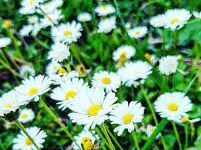Explore the life and legacy of Oiram Bori, a key patron of Miching culture in Assam. Discover his efforts to preserve and revive Miching traditions, his significant cultural contributions, and the impact of his work in promoting indigenous dances and heritage
Oiram Bori-Brief Life Sketch
Oiram Bori
Oiram Bori-Brief Life Sketch
Oiram Bori was a patron of Miching culture in Assam.
Oiram Bori was born in the village of Ayan under the British administration ‘Nefa’ in 1877. His parents’ names were Takir Bori and Mangli Bori respectively.
At that time there was no school around the village. He was educated up to Class IV in Mechaki Primary School under Purana Murkunchalek, a distance of thirty-five kilometres from his village.
In 1950, OIram Bori began to work on the preservation of a colourful Miching culture that was on the brink of losing. In 1952, he started working with some Miching youth to revive Miching indigenous dances and culture. This cultural group spread its colourful culture from Jonai, Pachighat to Guwahati, Jorhat, Dibrugarh and Majuli.
It is worth mentioning that Oiram Bori, a devotee of the Miching culture, gave a new dimension to Miching culture by systematically performing Lumgang-Lavale, Gumvaraga dance with the help of five young women. In addition, in the backward Miching villages of Tahani’s Murkanchelek region, he adopted some plans to uplift the cultural heritage and social status of the Miching community. 0 0 0
Oiram Bori-Brief Life Sketch
Here are some FAQs based on the brief life sketch of Oiram Bori:
1. Who was Oiram Bori?
Oiram Bori was a prominent patron of Miching culture in Assam, known for his efforts in preserving and reviving Miching traditions.
2. When and where was Oiram Bori born?
Oiram Bori was born in 1877 in the village of Ayan, which was under British administration in what was then known as NEFA (North East Frontier Agency).
3. Who were Oiram Bori’s parents?
His parents were Takir Bori and Mangli Bori.
4. What was Oiram Bori’s educational background?
He was educated up to Class IV at Mechaki Primary School, located thirty-five kilometers from his village.
5. What role did Oiram Bori play in preserving Miching culture?
Oiram Bori worked to preserve Miching culture by reviving traditional dances and cultural practices, starting in 1950.
6. How did Oiram Bori contribute to the revival of Miching culture?
In 1952, he collaborated with Miching youth to revive indigenous dances and culture, spreading it from Jonai and Pachighat to major cities like Guwahati, Jorhat, Dibrugarh, and Majuli.
7. What specific cultural performances did Oiram Bori help revive?
He performed and organized traditional dances such as Lumgang-Lavale and Gumvaraga in a systematic manner with the help of five young women.
8. How did Oiram Bori influence Miching culture in the Tahani’s Murkanchelek region?
He implemented plans to uplift the cultural heritage and social status of the Miching community in the backward villages of Tahani’s Murkanchelek region.
9. What was Oiram Bori’s impact on Miching culture?
His efforts significantly contributed to the preservation and revival of Miching cultural practices, ensuring their continuity and broader recognition.
10. What was the significance of Oiram Bori’s work in the broader context of Assamese culture?
Oiram Bori’s work was significant in promoting the diverse cultural heritage of Assam and integrating Miching culture into the larger Assamese cultural landscape.
11. How did Oiram Bori’s work affect the Miching youth?
His work inspired and engaged Miching youth in cultural activities, fostering a sense of pride and connection to their traditions.
12. What challenges did Oiram Bori face in his cultural preservation efforts?
He likely faced challenges related to the lack of resources, the remoteness of his village, and the need to overcome modern influences on traditional practices.
13. Did Oiram Bori receive any recognition for his contributions to Miching culture?
The available information does not specify formal recognitions, but his contributions are widely respected and remembered within the Miching community.
14. What role did Oiram Bori play in the development of Miching cultural groups?
He was instrumental in forming cultural groups that performed traditional dances and promoted Miching culture across various regions.
15. How did Oiram Bori’s initiatives impact Miching cultural festivals?
His initiatives helped revitalize and maintain the cultural festivals and traditional practices of the Miching community.
16. What was the primary goal of Oiram Bori’s cultural preservation work?
The primary goal was to preserve Miching cultural traditions and practices that were at risk of being lost.
17. In what ways did Oiram Bori’s work extend beyond his village?
His work extended beyond his village by spreading Miching culture to urban centers and other regions, increasing its visibility and appreciation.
18. How is Oiram Bori remembered in the context of Assamese cultural history?
He is remembered as a key figure in the preservation and revival of Miching culture, contributing significantly to Assamese cultural heritage.
19. What cultural practices did Oiram Bori focus on in his preservation efforts?
He focused on traditional dances, rituals, and cultural practices, ensuring they were performed and appreciated in a systematic manner.
20. How did Oiram Bori’s background influence his cultural work?
His upbringing in a culturally rich environment and his commitment to preserving his heritage influenced his dedication to reviving and promoting Miching culture. 0 0 0
N.B. The article ‘Oiram Bori-Brief Life Sketch’ originally belongs to the book ‘Introduction to World Personalities‘ by Menonim Menonimus.
Books of Composition by M. Menonimus:
- Advertisement Writing
- Amplification Writing
- Note Making
- Paragraph Writing
- Notice Writing
- Passage Comprehension
- The Art of Poster Writing
- The Art of Letter Writing
- Report Writing
- Story Writing
- Substance Writing
- School Essays Part-I
- School Essays Part-II
- School English Grammar Part-I
- School English Grammar Part-II..
Books of S. Story by M. Menonimus:
Books of Biography by M. Menonimus:
- The World Writers-Brief Biographies
- Introduction to World Writers
- Introduction to World Personalities
- Love of Reputed Persons ..
Related Search:








